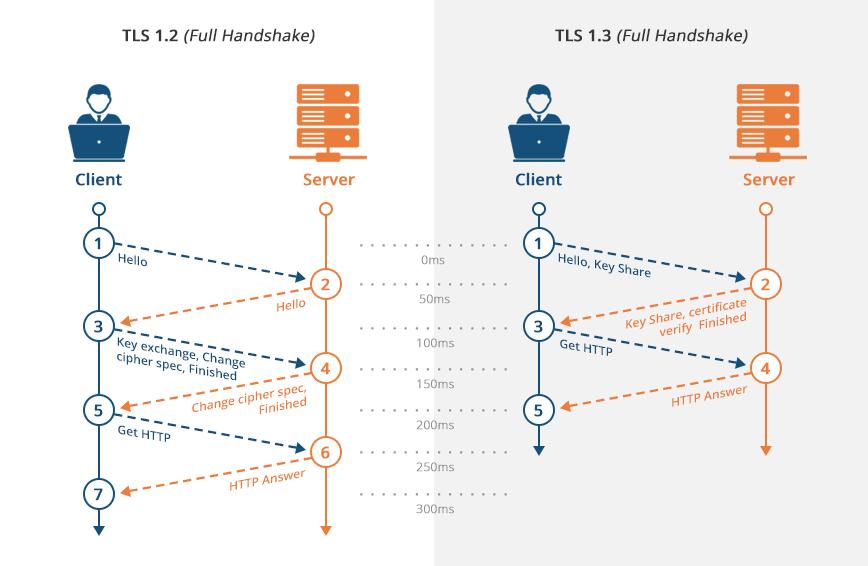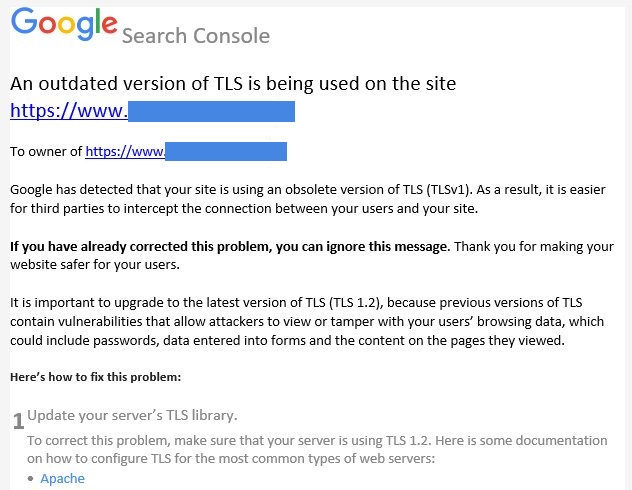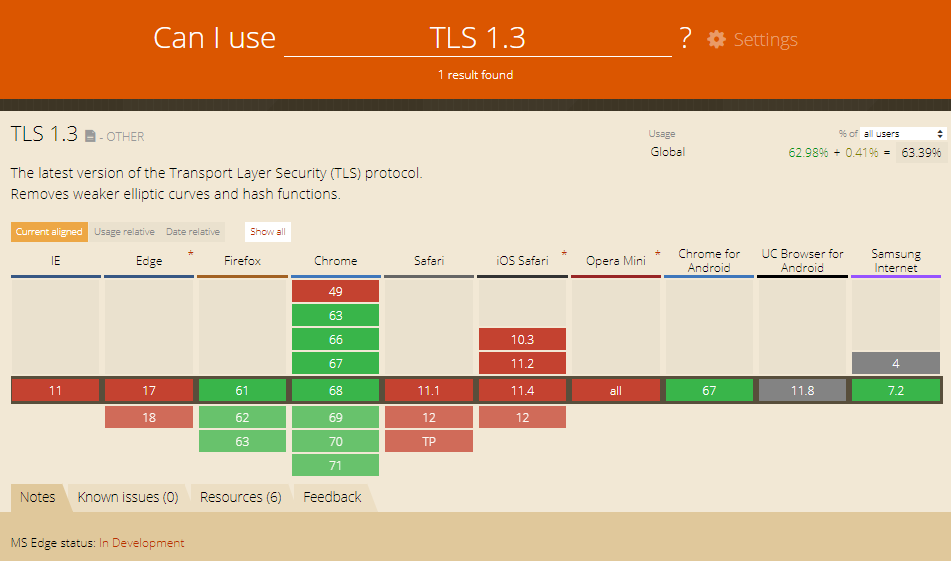The Internet world has already woken up to a new offering coming from The Internet Engineering Task Force (IETF) when it released TLS 1.3 on August 10th 2018. IETF, an organization that suggests and defines internet protocols is the champion behind this major development. Regarded as a successor to SSL (Secure Sockets Layer), the Transport Layer Security (TLS) 1.3 protocol is poised to positively impact everything concerning internet security and performance.
A Prelude to TLS 1.3
Given the fact that earlier versions of TLS were defined and released since around 8 years, a number of iterations led to the release of the TLS 1.3 version protocol. It is through this advanced protocol that websites will enjoy enhanced speed, improved encryption features, coupled with superior security standards. And for you to secure your web traffic through this new TLS 1.3 protocol, you need to enable your web browsers by default.
TLS 1.3 – The Perfect Successor to TLS 1.2
It is a well-known fact that security in handling and transacting with online information is paramount to every business. It is for this purpose that the TLS 1.3 protocol successfully meets the demands of web security, privacy, performance and speed. To sum it all, it is through the recent TLS 1.3 protocol that you can enjoy the benefits of superior web security teamed with enhanced encryption.
The ineffectiveness of the previous TLS 1.2 version to handle high-level vulnerabilities led to the evolution of the latest TLS 1.3 protocol. That means, with the TLS 1.3 by your side, you will be in a strong position to nip off all the problems linked to internet vulnerabilities.
Let us now look at the various features that the TLS 1.3 protocol brings to the safer Internet.
Enhanced Web Security
Constant checks to analyze, enhance and validate internet security were conducted by the IETF, leading to the evolution of TLS 1.3. A long list of insecure and outdated features that were not resolved by TLS 1.2 will now come under the umbrella of TLS 1.3. They are: MD5, SHA-1, DES, RC4, 3DES, AES-CBC and MD5. Along with these, TLS 1.3 guarantees improved security to Arbitrary Diffie-Hellman groups like CVE-2016-0701. Not to forget, TLS 1.3 can also influence the EXPORT-strength ciphers which are responsible for LogJam and FREAK.
Thanks to the recent TLS 1.3 protocol, you will now be able to remove all the inefficiencies that emerge because of weak configurations. You will also be in a position to address the common vulnerability exploits including SLOTH, CRIME, Vaudenay, DROWN and Lucky 13.
Enjoy Speed and Faster Load Times
It is an interesting piece of information to note that TLS 1.3 enables the speeding of encrypted connection through features like Zero Round Trip Time (0-RTT) and TLS False Start. Overcoming the slight overhead that comes from encrypted connections, TLS 1.3 offers a perfect solution to improve your web performance through enhanced speed.
To explain in layman’s terms, the earlier version of TLS 1.2 required two round-trips to complete a TLS handshake which was successfully reduced to a single round-trip by the TLS 1.3. That means TLS 1.3 steps in to cut down the encryption latency to half, enabling all the encrypted connections to enjoy better speed.
Below is the graphical representation highlighting the contrast between TLS 1.2 and TLS 1.3 when it comes to the speed of exchange of information between the client and server.
Indicators Supporting the TLS Version 1.3 Protocol
It is interesting to note that Google has already started raising red flags in search console to users about its migration to the TLS 1.2 version, indicating that TLS 1 is obsolete and is no longer safe.
Google, through its Chrome 63 has publicized the use of a draft version of TLS 1.3 for outgoing connections. Chrome 56 has announced the support for TLS 1.3 which was seconded by Chrome used on the Android operating system. Mozilla, on the other hand, quoted that is implementing the TLS 1.3 version by default on Firefox 52 and on all its advanced versions including Quantum. The social media platform Facebook quotes that over 50% of its web traffic is secured through the TLS 1.3 protocol.
Other browsers such as Safari, Microsoft Edge, IE and Opera Mini are still not supporting the TLS 1.3 protocol. Some of the browsers are still in the development stage with the implementation of this new version.
Below is the pictorial representation of the implementation of TLS 1.3 version protocol on various web browsers.
Image Source – caniuse.com
Conclusion
With the release of the much-needed advanced TLS 1.3 version protocol, the internet fraternity can derive a plethora of web performance benefits. These include: enhanced loading times along with data privacy and security through tighter encryption standards. The newly released TLS 1.3 protocol will be looked upon as a positive development exceeding the expectations of SSL, given the fact that SSL was in vogue for the last around 20 years.



